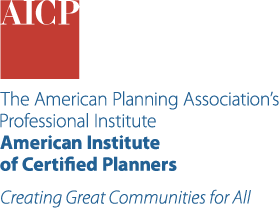Accessible Planning for Health Equity
For only $180, get a full year of unrestricted access to APA's extensive learning library. Kickstart your journey by subscribing to Passport, then take the next step by enrolling in the courses that pique your interest.
Certification Maintenance
Course Details
Access to health and healthy living is not universal. Financial considerations aside, the absence of daily conveniences that most people take for granted results in substantial barriers for others. Decades of funding centered on communities designed for personal vehicles have had significant unintended consequences for everyone who is not driving, especially persons living with disabilities. Curb heights, crosswalks, and sidewalk conditions all contribute to how easily one can access health services and recreation venues.
Through collaborative efforts and the aid of a few simple tools, planners can embed basic concepts of universal accessibility into every project, from active transportation, trail development, and comprehensive plans to community and economic development and major recreational expansions. Learn about 10 years of focused collaboration on access to health and active living with some amazing outcomes.
Learning Outcomes
- Identify opportunities for multi-tiered collaboration, including planners, health and human services departments, and other community service agencies at local, county, state, and national levels.
- Identify applicable solutions to accessible design concepts in all planning projects, including comprehensive and safety action plans.
- Recognize physical barriers by looking through a different lens, reconsidering everyday encounters such as curb cuts, access to park shelters, barrier-free playgrounds, accessible parking, and more.


